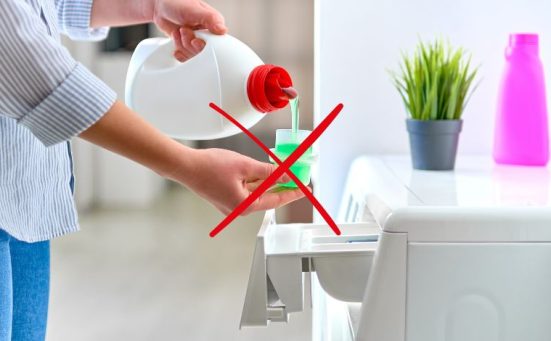
How To Check If Your Washing Machine Is Heating Water Or Not
If you suspect that your washing machine isn’t heating the water it uses to wash your laundry, you need to be sure before trying to fix something that isn’t broken. Many modern machines operate at lower temperatures and simply touching the glass door isn’t always enough to tell whether the water is heating up or not.
This is because modern washing machines are insulated so well and the selected cycle might only heat up for a short while. As long as the clothes leaving the drum are clean and smell fresh, you probably don’t need to worry.
For all of the information you need concerning how, when and why your washing machine uses hot water, keep reading.
How Do Washing Machines Heat Water?
Back in the earlier days of automatic washing machines they used to have two feed pipes, one for cold water attached to the main water supply and the other for hot water connected to the home’s water heater system.
Modern machines however, typically have just a cold feed connected to the mains water supply. The water gets heated on board which is a more energy efficient system because only the water that’s needed gets heated.
This is done by means of a heating element that the water passes on its way to the drum. You can tell if your washer heats its own water by checking the back of the appliance.
If there is only one water inlet hose (typically blue), it will be a cold water feed and the washer will heat its own water. If it has two water inlet hoses (typically one red and one blue) it draws in hot water from your home.
Another not so fool proof way to tell depends on which type of appliance you own. Modern front loading washing machines all tend to heat water on board and therefore only have a cold water inlet.
Many top loading washing machines on the other hand, still typically have both hot and cold water inlets. You should consult your washer’s user manual for more information.
How To Check The Water Temperature Of Your Washing Machine
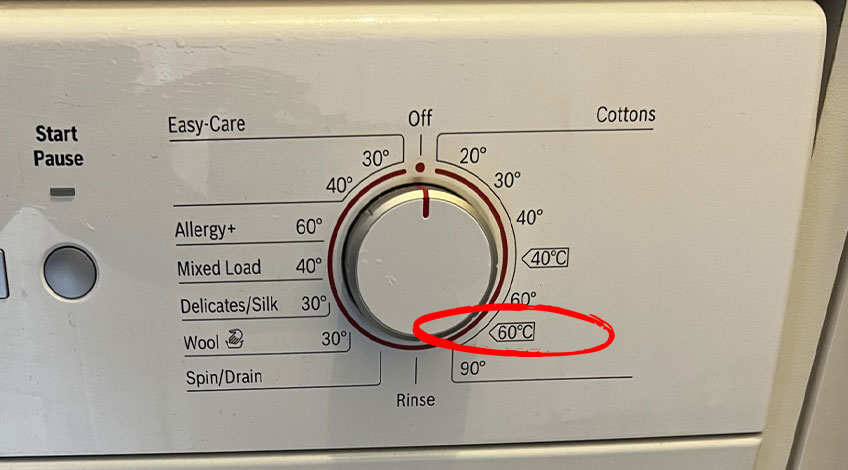
Most modern washing machines will detect any problems and display an error code to let you know whatever the problem is. This is not the case on older models however, but there are a few ways you can check. These include;
Run A Hot Wash Cycle
If you suspect that your washer isn’t heating up, run a hot (60°C) wash and after around 30 minutes check the glass door (front loaders) or lid (top loaders). If you can feel any heat, the chances are the appliance is working correctly.
The problem with this method is that modern washers have thick glass doors or plastic casings which tend to insulate pretty well. Added to which, the water is only hot for a short period of time during the wash cycle.
Check For Error Codes
Most modern washing machines will display an error code if for some reason the appliance isn’t functioning as it should. One such error code will display if the water doesn’t reach the desired temperature for the cycle selected.
If the heater element develops a fault, the cycle aborts and the washer displays an error code.Older machines never had this ability and kept rewashing until the thermostat sensed the correct temperature.
This could mean the washer would run indefinitely and not stop until another component burnt out.
However, even some modern washers can develop faults where they stick mid-cycle which leads to the machine continuously washing. If this is the case with your washer, it’s time to contact the manufacturer if the appliance is still under warranty. If not you need a technician to diagnose and fix your washer.
What Causes A Washing Machine To Fail To Heat The Water?
There are several reasons why a washing machine will fail to heat the water during use. These include;
| Issue | Reason | Solution |
|---|---|---|
| Cold water wash | Cold wash cycle selected | Not a problem, just select a hotter wash in future if needed |
| Drainage Problem | Drain hose set too far into the standpipe | Adjust drain hose to between 12.7 to 15 cm into standpipe |
| Washer stops mid cycle | Faulty heating element | Check and replace heating element if necessary |
| Washer stops mid cycle | Faulty thermostat | Check and replace thermostat if necessary |
| Water not heating up | Defective pressure switch | Contact a technician |
| Appliance not heating up | Wiring fault | Contact a technician |
| Machine not working | Blown thermal fuse | Contact a technician |
| Appliance not heating up | Defective control board | Contact a technician |
Let’s look at each of these issues in more detail;
You May Have Selected A Cold Wash Cycle
Many modern washing machines have super efficient cold water wash cycles which can get clothes clean at temperatures as low as 30°C or even 20°C. Selecting one of these cycles will not typically heat the washer to a detectable level.
There May Be A Drainage Issue
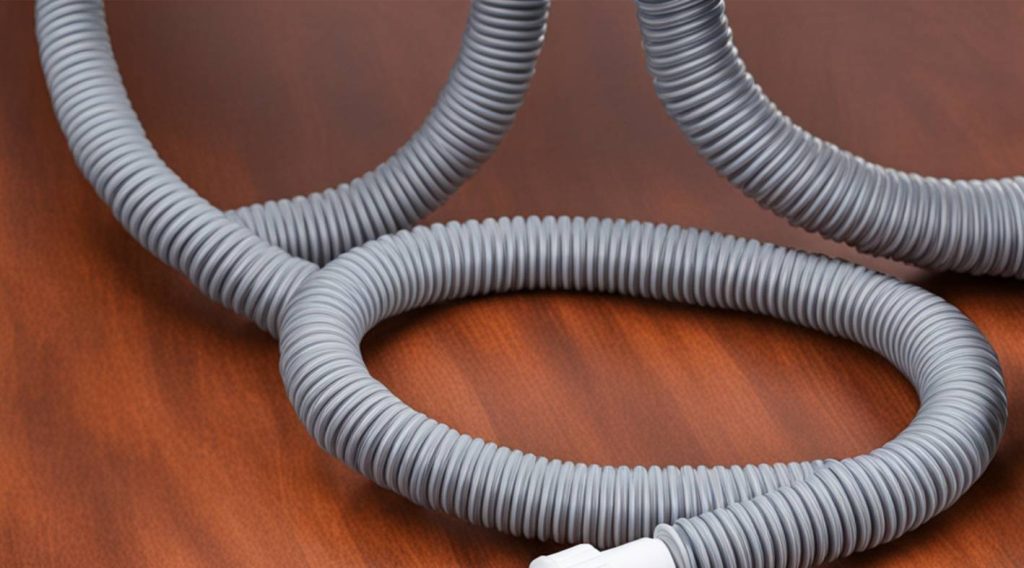
If the drain hose on your washer is set too far into the standpipe, water could be constantly draining. The washer will try to compensate for this by drawing more water.
This newly drawn water will not have time to achieve the desired temperature. Check that the drain hose is set into the standpipe no more than 12.7 to 15 cm.
You Might Have A Faulty Heating Element
The heating element heats up the cold water that enters your washing machine. If it develops a fault, the water in the washer will not heat up any more. It is also quite common for the appliance to stop mid-cycle if the heating element is faulty.
This should be followed by an error code being displayed or the LED lights might start flashing.
If you suspect that the heating element might be at fault, try running a cold wash cycle. If the washer runs a full cold wash cycle, it’s highly probable that the heating element is at fault.
If you’re confident of your DIY skills, it’s possible to check the heating element for continuity using a multimeter. If not, contact a technician to sort this for you.
You May Have A Faulty Thermostat (Thermal Sensor)
The thermostat is designed to send a message to the timer when the set temperature has been achieved. If there is a fault with the thermostat, the water will not heat up and the washer is likely to stop mid-cycle.
You can test the thermostat by running a cold wash cycle, if it runs through to the end, and the heating element isn’t at fault, it’s most likely to be a faulty thermostat.
Once again this can be checked using a multimeter and replaced if necessary. However, some machines have a safety thermostat that’s designed to be reset by pressing a small button.
It Could Be A Defective Pressure Switch
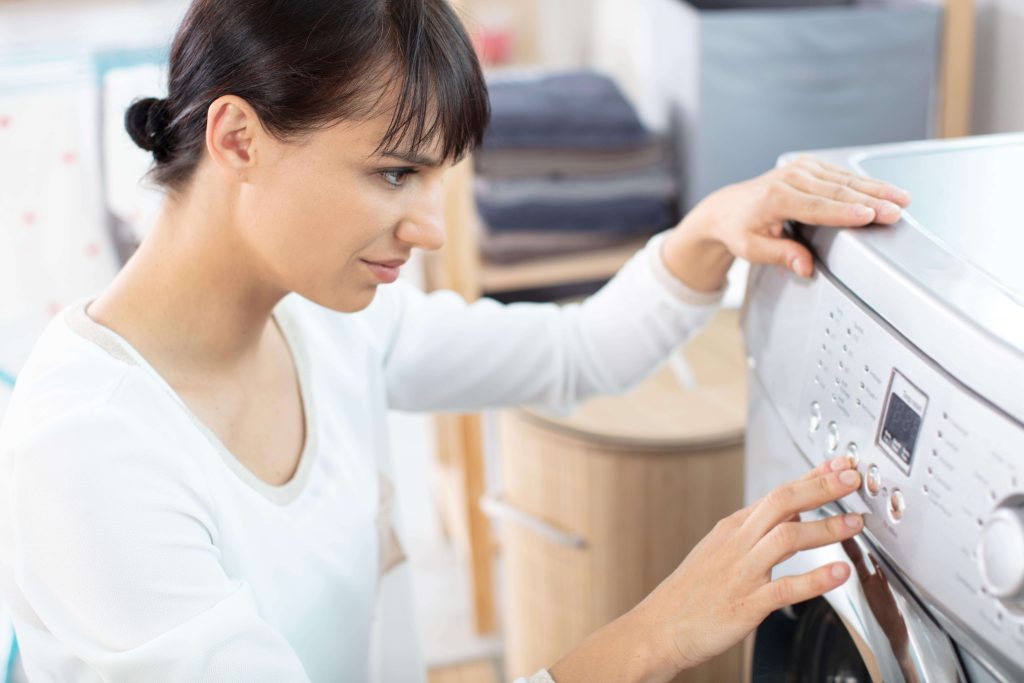
The pressure switch detects how much water is in the machine and relays this information to the control board. This is how the machine knows when to heat the water.
If the pressure switch is defective the washer will not tell the heating element to heat the water.
If your washer is one of the older models, it’s possible that you can check the pressure switch using a multimeter. However, modern machines tend to have digital pressure switches which cannot be tested manually which is why this is a job best left to an expert.
You Might Have Wiring Issues
Your washing machine relies on electrical wires to connect all of the working parts. All of these wires have some form of connector and these connectors can become defective. They can short circuit, oxidise or simply burn out over time.
If one of the wires connecting parts in the heating system of your washer has developed a fault, there’s a good chance that the appliance will not heat up.
This can be checked by a competent DIYer but as it involves dismantling the appliance we recommend contacting a technician to do this for you.
It Could Be A Blown Thermal Fuse
The thermal fuse is designed to blow if the washing machine overheats. If this is the problem, you should definitely get your washer checked by an expert.
You May Have A Defective Control Board
The control board manages every function on your washing machine. If it is defective, it won’t instigate the heating system to start up.
If you’ve checked everything else, there’s a strong possibility that the control board is the problem.
Check The Washing

If you suspect that your washing machine has a fault and is not heating the water correctly, it can be worrying and annoying. However the best thing to do is check the laundry after the wash cycle has completed.
If the clothes are clean and smell fresh, there’s a good chance that the machine is functioning properly. Generally, if the laundry is coming out clean and smelling fresh, there’s nothing to worry about.
However, if in doubt, get an expert to check your washer for you. This will give you peace of mind and ensure that your washer is running as efficiently as it should.
Will A Washing Machine Work Without Hot Water?
If your washer fails to heat the water, you could be wondering whether the washer will become damaged or even work at all. The answer is that as long as there is water going to the machine, it should work.
It can be safely run using cold water as long as you use a detergent that is suitable for cold water wash cycles. If, on the other hand, there’s no water at all going to the machine, running it could seriously damage the appliance.
If your washer doesn’t have an internal heating element and draws water from your home’s hot water supply, and there’s no hot water only cold, the washer will still work. However, the clothes might not be as clean as you would expect.
Will The Laundry Clean As Well On A Cold Wash?
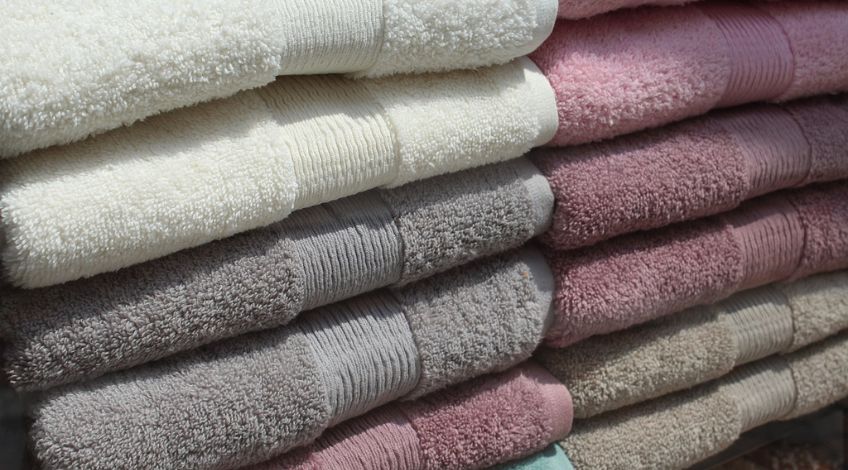
If the heating system on your washing machine isn’t working and you run a wash cycle anyway, the clothes should clean effectively. This is because modern detergents are designed to work just as well at lower temperatures.
This is true at 30°C and even 20°C however, stubborn stains might benefit from a pre-wash or soak first. In fact, using a cold wash cycle can be a great way of freshening lightly soiled garments and will also benefit many delicate items as well.
However, there are certain types of laundry that will do better using a warm or hot wash cycle. These include;
- Towels
- Bedding
- Underwear (non delicates)
- White Clothes
- Heavily Soiled Items
It should also be noted that cool wash cycles of 20°C if used regularly can lead to an increase of mould, mildew, grease, dirt and limescale deposits.
This can be particularly prevalent around the detergent drawer and door seal gasket.
SEE ALSO: Washing Machine Not Heating Water? (this might be why)
Frequently Asked Questions
If you own a modern washing machine it will display an error code if the water isn’t heating up.
If the water in your washing machine isn’t getting hot and you haven’t selected a cool wash cycle, it’s probably because of; a faulty heating element, defective thermostat, drainage issue, wiring problem or a faulty control board.
Depending on the age and condition of your washing machine, it can work out far better financially to replace the heating element compared to buying a new washing machine.
Modern front loader washing machines tend to just have cold water inlet pipes. Older models often have hot and cold inlet pipes.
Modern washing machines tend to have an inbuilt heater which heats the cold water that is supplied to the machine directly from the cold water supply. If your washing machine has hot and cold water inlet hoses, then it probably won’t have an inbuilt water heater.
Also, follow us on Pinterest ...


